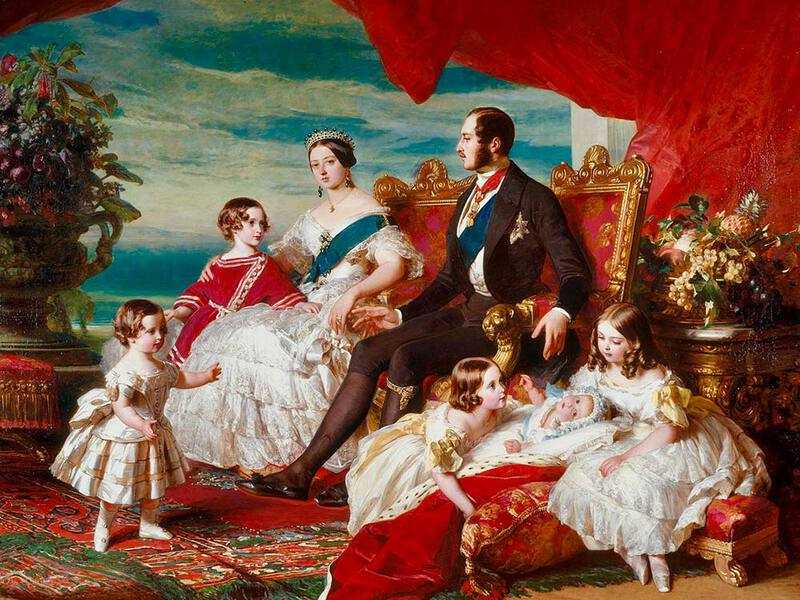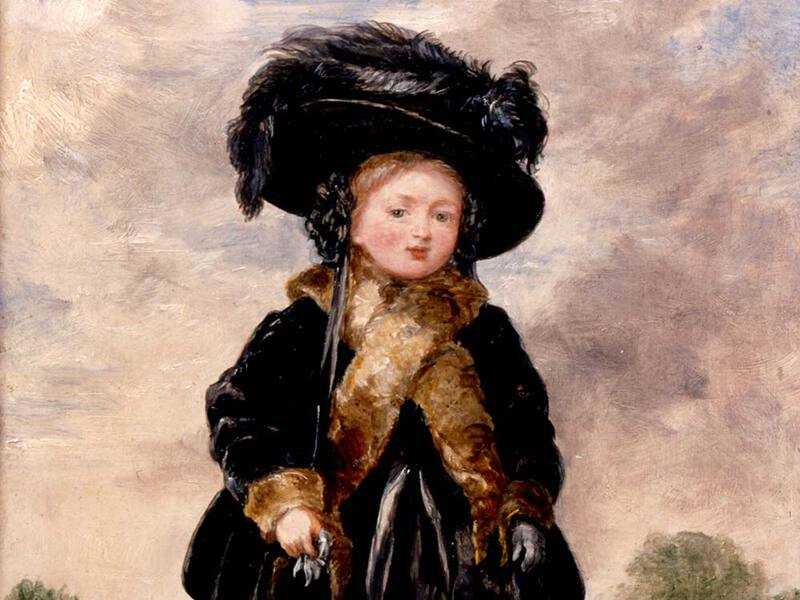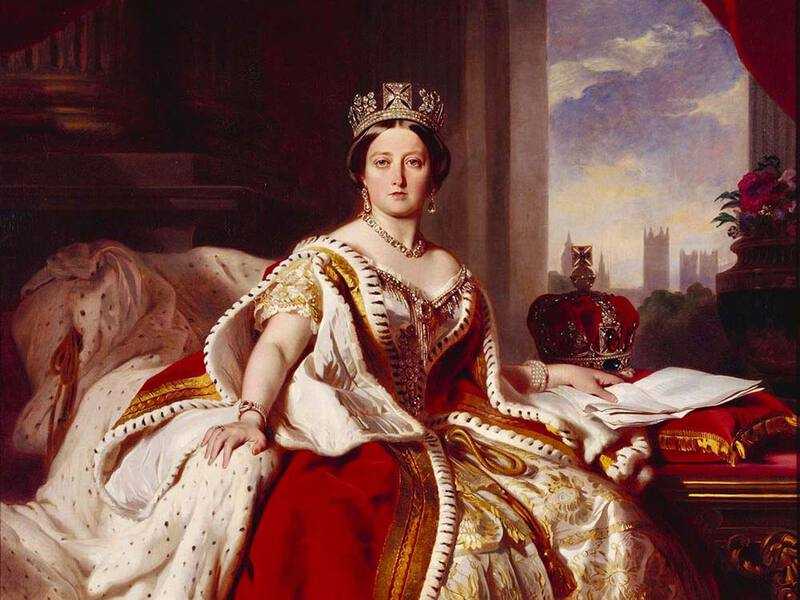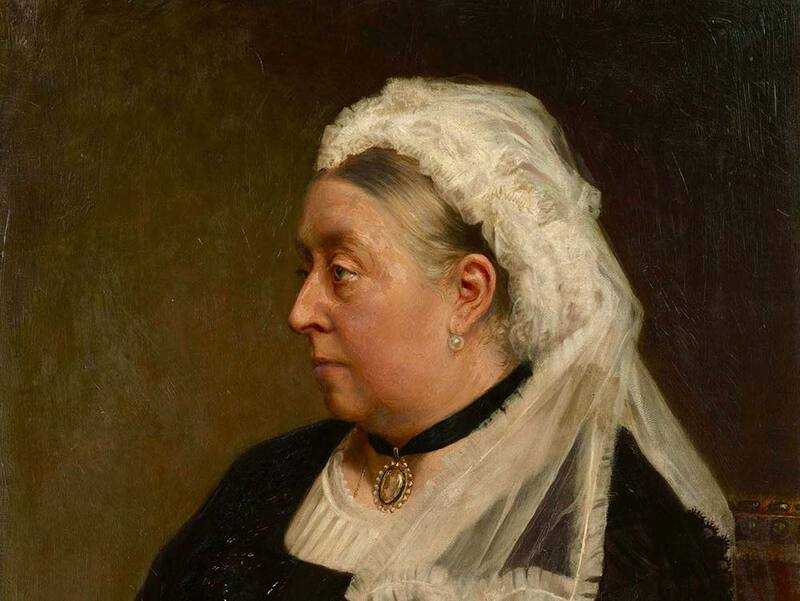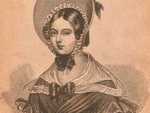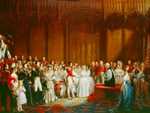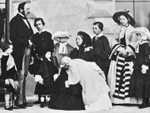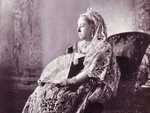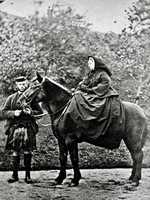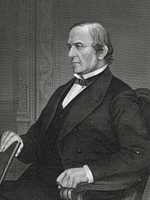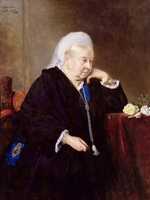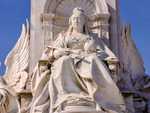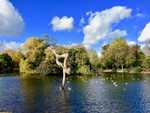1. Early Life
Born in 1819 in Kensington Palace to Prince Edward, George III’s fourth son, Victoria was at birth fifth in line to the throne.
Her father died the next year, with Victoria’s childhood activities being rigorously controlled by her mother and her lover, Sir John Conroy.
Becoming Queen
Within a month of turning 18, William IV had died and Victoria had become queen. She was crowned on 28 June 1838 and took up residence at Buckingham Palace shortly thereafter, the first monarch to do so.
According to social convention, Victoria had to live with her mother until she married. This may have been a mild catalyst for Victoria’s February 1840 marriage to Prince Albert of Saxe-Coburg, with whom she was and remained besotted.
Victoria recognised that an 18 year-old girl would need assistance in discharging her role. She received and accepted substantial guidance from her first Prime Minister, Lord Melbourne, and later from Prince Albert with whom she also had a close working relationship.
Reproduction ...
Victoria produced her first child, named after her, in November 1840 and went on to have eight further children over the next 17 years. Her second-born, Prince Albert Edward, became Edward VII on her death. These children, and more importantly the marriages Victoria arranged for them, are an important part of her legacy.
In total, Victoria and Albert had 42 grandchildren, with descendents including Queen Elizabeth II, Herald V of Norway and Queen Sofia of Spain. As a result, Victoria is often called the Grandmother of Europe.
2. Later Life
Albert died of typhoid fever in December 1861.
The effect on Victoria was devastating: she avoided London and public appearances; wore black for the rest of her life; and blamed Albert’s death on the “philandering” of her eldest son (Albert’s death came shortly after he had confronted his son over rumours of an affair with an Irish actress).
Popularity
Victoria’s popularity—which fluctuated throughout her reign—took a nosedive as a result of her seclusion.
Things started to improve in the early 1870s, and Victoria was buoyed further by Benjamin Disraeli’s triumph in the 1874 general election. Disraeli had always been popular with Victoria, perhaps because he was good at flattering her (he once said “everyone likes flattery … and when it comes to royalty you should lay it on with a trowel”).
In contrast, Victoria disliked the other great statesman of her age, William Gladstone.
Empire
Victoria was a big fan of Empire, seeing British control as a way of civilising the world. She supported Disraeli’s expansionist foreign policy and India’s transfer away from the East India Company to the direct control of the British Crown following the Indian Rebellion of 1857. In return, Victoria was given the title Empress of India in 1876.
In the decades that followed, Victoria celebrated her golden and diamond jubilees in 1887 and 1897 respectively, with elaborate banquets attended by royalty from around the globe and an outpouring of public affection. She died in January 1901 and was interred beside Prince Albert in Windsor Great Park’s Frogmore Mausoleum.
Death
Victoria had reigned for over 63 years, which until 2015 (when she was overtaken by Elizabeth II) was the longest of any British monarch and any queen in world history. She was the last sovereign from the House of Hanover, with her eldest son Edward VII belonging to Albert’s House of Saxe-Coburg.
3. Politics
During Victoria’s reign, there were 20 changes of Prime Minister.
In two years – 1868 and 1886—three Prime Ministers held office. Victoria's Prime Ministers included Gladstone and Disraeli, as we have mentioned, and also Viscount Palmerstone, the Marquess of Salisbury and the Earl of Rosebury.
What was Victoria’s political contribution?
At one level, her reign saw an increase in the powers and legitimacy of parliament. The entrenchment of a two-party system meant that the monarch’s right to choose her prime minister became far less important, and the extension of the right to vote by Acts of Parliament passed in 1867, 1872 and 1884 enfranchised substantial additional sections of the population (though not women).
It was, then, true that by the mid-point in her reign, the role of a monarch was, as Walter Bagehot wrote in 1867, "to be consulted, to encourage and to warn". In other words, the monarchy was very much constitutional in nature.
Gravitas and stability
On the other hand, Victoria had gravitas, permanence and, at least by the end of her reign, substantial public support. She also exerted an important maternal and moral influence over the nation, a feat that many of her predecessors and successors have failed to achieve. She used these powers to exert substantial influence over the politicians of the day.
4. Legacy
Victoria’s 63-year reign coincided with scientific, industrial, cultural and economic progress.
Science and culture
By the time of her death, Darwin’s theory of evolution had been published; antiseptics and anaesthetics were used in medicine; there were telephones, cars and aircraft; the London underground and sewage system were built; Dickens, Eliot, Tennyson, Bernard Shaw and Wilde had produced great literature; and the football league had been established.
Empire
As importantly, Victoria’s reign coincided with the growth of empire. Unimpeded by the French, roundly beaten in the 1815 Battle of Waterloo, Britain claimed New Zealand and Canada as dominions, control of the Suez Canal and direct control of India. There was, by the turn of the twentieth century, truth in the expression that Britain established an empire on which the sun never set.
Legacy
Victoria and Albert were keen patrons of the 1851 Great Exhibition, which raised funds for the establishment of the South Kensington Museum Complex in West London (which comprises, in particular, the Science, Natural History, and Victoria & Albert Museums). She purchased Osborne House on the Isle of Wight, later bequeathed to the nation by Edward VII. And Victoria Park in east London is named after her.
For his part, Prince Albert bought Balmoral, which remains the sovereign’s summer retreat.
